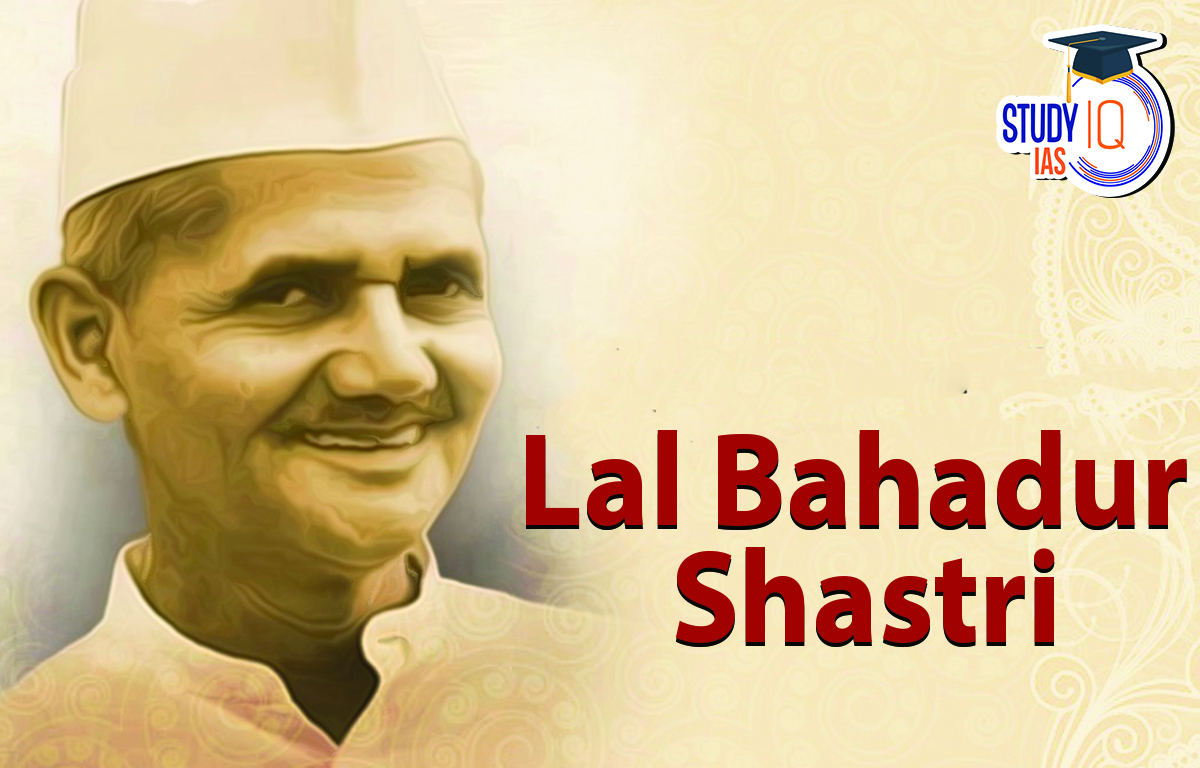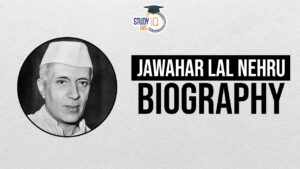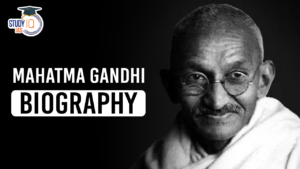Table of Contents
Lal Bahadur Shastri Jayanti 2025 is observed on 2nd October, marking the 121st birth anniversary of one of India’s most respected leaders. Known for his integrity, simplicity, and unwavering patriotism, Shastri Ji left an indelible mark on the nation’s history. His iconic slogan “Jai Jawan, Jai Kisan” continues to inspire Indians and reflects his deep respect for soldiers and farmers.
Every year, India pays tribute to its ideals, leadership, and contributions to the country. As the nation celebrates Shastri Jayanti 2025, it is the perfect occasion to revisit his life story, achievements, and legacy.
Lal Bahadur Shastri Jayanti 2025
Lal Bahadur Shastri Jayanti 2025 is observed on 2nd October, marking the 121st birth anniversary of India’s second Prime Minister. Born in 1904 in Mughalsarai, Uttar Pradesh, Shastri was admired for his simplicity, honesty, and patriotism. He actively participated in India’s freedom struggle, including the Non-Cooperation Movement, Salt Satyagraha, and Quit India Movement. As Prime Minister, he led during the 1965 India-Pakistan war, promoted the Green and White Revolutions, and inspired the nation with his slogan “Jai Jawan, Jai Kisan”. Shastri Jayanti is celebrated with tributes, educational programs, and community activities, honoring his legacy of service, integrity, and leadership.
Lal Bahadur Shastri Early Life & Education
Lal Bahadur Shastri was born on October 2, 1904, in Mughalsarai (now Pandit Deen Dayal Upadhyaya Nagar) in Uttar Pradesh. He hailed from a modest family, which shaped his character and values from a young age. His father, Sharada Prasad Srivastava, was a school teacher and later a clerk, and his mother, Ramdulari Devi, raised him and his siblings with discipline after his father’s early death.
Shastri opposed caste-based discrimination and deliberately dropped his surname “Srivastava” to promote equality. His belief in simple living and high thinking became his lifelong philosophy.
- Ramdulari Devi and Sharada Prasad Shrivastava welcomed Lal Bahadur Shastri into the world on October 2, 1904 in Mughalsarai, United Provinces (modern-day Uttar Pradesh).
- The nation’s founding father, Mahatma Gandhi, also has the same birthday as him. Lal Bahadur wanted to abandon his last name because he disagreed with the current caste system.
- After he graduated from Kashi Vidyapeeth in Varanasi in 1925, he was given the title “Shastri.” A “scholar” or someone skilled in the “Holy Scriptures” is referred to by the term “Shastri”.
- When Lal Bahadur was just two years old, his father Sharada Prasad, a schoolteacher by profession, went away.
- He and his two sisters were taken to their maternal grandfather HazariLal’s home by their mother Ramdulari Devi.
- In his early years, Lal Bahadur learned the virtues of bravery, love of exploration, patience, self-control, courtesy, and selflessness.
- Lal Bahadur was moved to Varanasi to finish his primary schooling there before staying with his maternal uncle.
- The youngest daughter of Ganesh Prasad, Lalita Devi, was married to Lal Bahadur Shastri in 1928.
- He declined to accept dowry because he disagreed with the current “dowry system.” But after persistent prodding from his father-in-law, he consented to accept as dowry merely five yards of khadi (cotton that is often handspun). The couple has six kids.
Lal Bahadur Shastri’s Prominence in the Indian National Congress
After India gained independence in 1947, Shastri joined the Indian National Congress, the leading political party at the time. He quickly rose through the ranks, serving in various capacities within the party and the government.
Early Role in Congress
Shastri joined the Congress as a young activist, inspired by Mahatma Gandhi’s principles of non-violence and truth. He actively participated in:
-
Non-Cooperation Movement (1921) – promoting non-violent resistance against British rule.
-
Salt Satyagraha (1930) – joining the Dandi March and advocating self-reliance.
-
Quit India Movement (1942) – organizing protests and facing imprisonment for his nationalist activities.
Administrative and Leadership Roles
Post-independence, Shastri held several key positions within the Congress:
-
General Secretary and District Congress Leader – managing party activities at the grassroots level.
-
Union Minister – serving in portfolios such as Railways and Home Affairs, where he gained a reputation for honesty, efficiency, and integrity.
Rise to National Prominence
His administrative acumen and clean image earned him nationwide respect. Within the Congress:
-
He was known for bridging ideological and regional differences, uniting leaders across factions.
-
Supported Nehru’s vision while also voicing practical solutions for farmers, workers, and defense issues.
-
Emerged as a consensus leader, eventually becoming Deputy Prime Minister and later the second Prime Minister of India in 1964.
Lal Bahadur Shastri Political Career
Pre-independence Activism
Young Lal Bahadur became motivated to join the Indian nationalist movement after being moved by the tales and speeches of national leaders. Additionally, he enjoyed reading international writers like Marx, Russell, and Lenin. After hearing a speech by Mahatma Gandhi in 1915, he decided to actively take part in the movement for India’s independence.
Post-independence
Before becoming the Prime Minister of India, Lal Bahadur Shastri held several jobs. He was appointed the Minister of Police in the Govind Vallabh Panth Ministry of Uttar Pradesh following Independence. His advice included the use of “water jets” as opposed to lathis to scatter the unruly crowd. Shastri was invited to join the Union cabinet as Minister for Railways by Jawaharlal Nehru after being impressed with his attempts to modernize the state police force.
| Timeline |
Details |
| 1947 | Shastri was chosen to serve as Uttar Pradesh’s Parliamentary Secretary.
Later, in 1947, he was appointed Chief Minister Govind Ballabh Pant’s Minister of Police and Transport. He was the first to hire female conductors. |
| 1951 | When Jawaharlal Nehru became prime minister, he was appointed general secretary of the All India Congress Committee. |
| 1952 | He was expected to continue serving as the home minister of Uttar Pradesh after winning the UP Vidhansabha seat from Saraon North and Phulpur West. But Nehru rather appointed him to the central government as the first cabinet of the Republic of India’s Ministry of Railways and Transport. |
| 1956 | In Tamil Nadu, two train accidents resulted in 144 fatalities, and he resigned because he felt accountable as the highest authority. |
| 1959 | He was rehired as the minister of business and industry. |
| 1961 | He was appointed as the minister of internal affairs. |
Achievements of Lal Bahadur Shastri
- Shastri served as the Minister of Railways in Jawaharlal Nehru’s cabinet and played a crucial role in improving India’s rail infrastructure.
- He was known for his unwavering commitment to Gandhian principles of simplicity and honesty.
- Shastri became the Prime Minister of India in 1964, following Nehru’s death.
- His tenure was marked by several significant events, including the Indo-Pakistani War of 1965.
Lal Bahadur Shastri as Prime Minister of India
On June 9th, 1964, the mild-mannered and soft-spoken Lal Bahadur Shastri took over for Jawaharlal Nehru. Even though the Congress had several more powerful leaders, Shastri became the consensus choice after Nehru’s untimely death. Shastri, a supporter of Nehruvian socialism, exhibited great composure in trying circumstances.
Shastri addressed several basic issues such as the lack of food, unemployment, and poverty. Shastri requested the experts to develop a long-term plan to deal with the severe food scarcity. This marked the start of the infamous “Green Revolution.” He contributed to the promotion of the White Revolution in addition to the Green Revolution. During Shastri’s time as prime minister in 1965, the National Dairy Development Board was established.
During Shastri’s presidency, India experienced another aggression in 1965 from Pakistan following the Chinese aggression of 1962. Shastri demonstrated his mettle by making it abundantly apparent that India will not merely stand by. He said, “Force will be confronted with force,” while giving the Security Forces freedom to counterattack.
On September 23, 1965, the Indo-Pak War came to an end as the United Nations voted a resolution calling for a truce. On January 10, 1966, Lal Bahadur Shastri and his Pakistani counterpart Ayub Khan signed the Tashkent Declaration after Russian Prime Minister Kosygin promised to intercede.
Lal Bahadur Shastri and India’s Foreign Relations
Indo-Ceylon Agreement/ Bhandarnaike-Shastri Pact
It was a pact that the prime ministers of the two nations signed in 1964. The agreement had a profound impact on the status and future of Indian-born residents of Ceylon (later Sri Lanka), who were the offspring of British-transported tea estate labourers.
Burma
Following a military takeover in 1962, Burma deported some Indian families in 1964, which put the two countries’ relations under strain. In 1965, Shastriji paid an official visit to Rangoon, and friendly relations between the two countries were once more established.
Indo-Pak war of 1965
The Second Kashmir conflict, sometimes known by that name, was the result of multiple clashes between Pakistan and India in 1965. Shastriji led India in the battle valiantly despite being a strong adherent of Gandhiji’s concept of non-violence. The conflict started with Pakistan’s operation Gibraltar to sneak forces into Jammu and Kashmir.
“Jai Jawan, Jai Kisan” was the slogan he used when addressing the country, paying homage to the border soldiers and the farmers battling the food crisis. The Soviet Union and the United States intervened diplomatically, resulting in the Tashkent Declaration, which led to the UNSC resolution 211 declaring a truce and ending the hostilities.
Lal Bahadur Shastri’s Death
- Lal Bahadur Shastri, who had already experienced two heart attacks, passed away on January 11, 1966, from a third cardiac arrest.
- The only current Indian Prime Minister to have passed away abroad is he. In 1966, Lal Bahadur Shastri received a posthumous Bharat Ratna, India’s highest civilian honour.
Reasons for Lal Bahadur Shastri’s Death
- Many questions were raised when Shastri passed away unexpectedly, soon after agreeing to the Tashkent Pact with Pakistan.
- Shastri was allegedly poisoned, and the Russian butler who was serving the Prime Minister was detained, according to his wif,e Lalita Devi. However, he was later freed after medical experts determined that Shastri had died of a heart attack.
- The CIA may have been involved in Shastri’s death, according to a potential conspiracy theory that was reported in the media.
- The Prime Minister’s Office rejected the RTI request made by author Anuj Dhar, citing a potential deterioration in relations with the US.
Lal Bahadur Shastri Legacy
Lal Bahadur Shastri passed away on 11 January 1966, in Tashkent, shortly after signing the Tashkent Agreement to promote peace with Pakistan. His death remains a topic of mystery and debate, but his legacy remains strong and unquestioned.
Even with a short tenure, he left behind a model of leadership that was ethical, compassionate, and inspiring. His life is a reminder that true greatness lies in humility, service, and courage.


 Birsa Munda Birth Anniversary 2025: Life...
Birsa Munda Birth Anniversary 2025: Life...
 Jawahar Lal Nehru Biography: Celebrating...
Jawahar Lal Nehru Biography: Celebrating...
 Mahatma Gandhi Biography: 156th Birth An...
Mahatma Gandhi Biography: 156th Birth An...

























